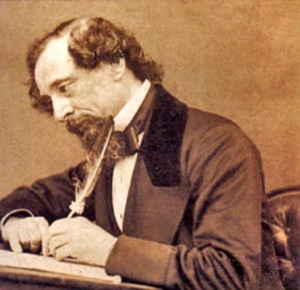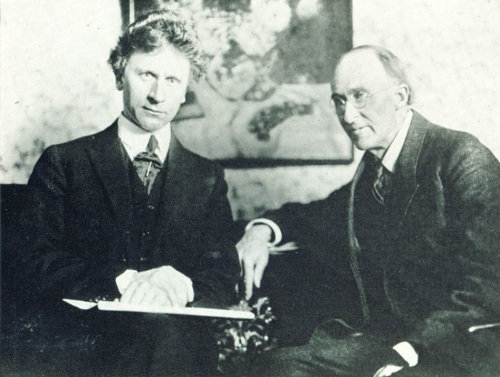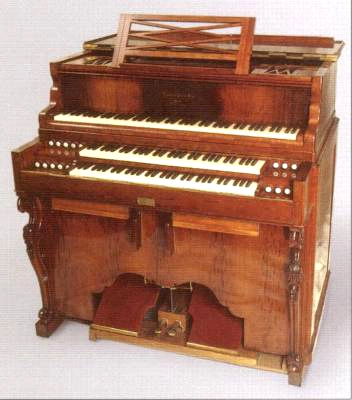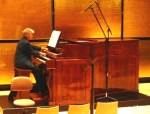
Reviews serve many valuable functions in music scholarship, from sparking critical discourse, to revealing topics of interest at a particular historical moment, to providing summaries and assessments for further inquiries, to shining a light on superlative (or, in some cases, substandard) research. Reviews collect and constitute interpretive communities, which arguably play a role in constructing the very meaning of a text.
In recognition of the importance of reviews, RILM inaugurates its Instant Classics series—a collection of the ten most-reviewed monographs indexed in the extensive international holdings of RILM Abstracts of Music Literature. The current list of books spans the two-year period from 2017 to 2019 and is ordered from least to most reviewed. Since it takes some time for texts to be assessed and reviews to be released, going back a few years provides a fuller and more accurate picture of a book in review.
This list is inherently limited, dynamic, and subject to continuous revision as more reviews potentially accrue for these and other texts. What we offer here is merely an inchoate snapshot, one that reflects the biases and areas of interest in music research at a specific time and place in history. With that in mind, it is also more than simply another “Top Ten” list, as it may hold a degree of historiographic value.
And finally, an important reminder: We need your help! RILM always welcomes your reviews or reviews of your publications. Notice an omission? Help us fill in our gaps by submitting your review.
– Compiled and edited by Michael Lupo, Assistant Editor and Marketing Coordinator, RILM
_______________________________________
#10. Wheeler, Barbara L., Donna W. Polen, and Carol L. Shultis. Clinical training guide for the student music therapist (2nd ed., rev.; Dallas: Barcelona, 2017). [RILM Abstracts of Music Literature, 2017-43779]

Abstract: Covers planning, assessment, goals and objectives, improvisation, composing, listening, individual and group work, documentation, and self-assessment.
#9. Borge, Jason R. Tropical riffs: Latin America and the politics of jazz (Durham: Duke University Press, 2018). [RILM Abstracts of Music Literature, 2018-1970]

Abstract: This book traces how jazz helped forge modern identities and national imaginaries in Latin America during the mid-20th century. Across Latin America jazz functioned as a conduit through which debates about race, sexuality, nation, technology, and modernity raged in newspapers, magazines, literature, and film. For Latin American audiences, critics, and intellectuals—who often understood jazz to stem from social conditions similar to their own—the profound penetration into the fabric of everyday life of musicians like Duke Ellington, Dizzy Gillespie, and Charlie Parker represented the promises of modernity while simultaneously posing a threat to local and national identities. Brazilian anti-jazz rhetoric branded jazz as a problematic challenge to samba and emblematic of Americanization. In Argentina, jazz catalyzed discussions about musical authenticity, race, and national culture, especially in relation to tango. And in Cuba, the widespread popularity of Chano Pozo and Dámaso Pérez Prado challenged the United States’s monopoly on jazz. Outlining these hemispheric flows of ideas, bodies, and music, this book elucidates how the art form was, and remains, a transnational project and a collective idea.
#8. Chua, Daniel K.L. Beethoven & freedom (New York: Oxford University Press, 2017) [RILM Abstracts of Music Literature, 2017-28046]

Abstract: Over the last two centuries, Beethoven’s music has been synonymous with the idea of freedom, in particular a freedom embodied in the heroic figure of Prometheus. This image arises from a relatively small circle of heroic works from the composer’s middle period, most notably the Eroica symphony. However, the freedom associated with the Promethean hero has also come under considerable critique by philosophers, theologians, and political theorists; its promise of autonomy easily inverts into various forms of authoritarianism, and the sovereign will it champions is not merely a liberating force but a discriminatory one. Beethoven’s freedom, then, appears to be increasingly problematic; yet his music is still employed today to mark political events from the fall of the Berlin Wall to the attacks of 9/11. Even more problematic, perhaps, is the fact that this freedom has shaped the reception of Beethoven’s music to such an extent that we forget that there is another kind of music in his oeuvre that is not heroic, a music that opens the possibility of a freedom yet to be articulated or defined. By exploring the musical philosophy of Theodor W. Adorno through a wide range of the composer’s music, this book arrives at a markedly different vision of freedom. The author suggests that a more human and fragile concept of freedom can be found in the music that has less to do with the autonomy of the will and its stoical corollary than with questions of human relation, donation, and a yielding to radical alterity. This work makes a major and controversial statement by challenging the current image of Beethoven, and by suggesting an alterior freedom that can speak ethically to the 21st century.
#7. Talle, Andrew. Beyond Bach: Music and everyday life in the eighteenth century (Urbana: University of Illinois Press, 2017). [RILM Abstracts of Music Literature, 2017-24136]

Abstract: Reverence for J.S. Bach’s music and its towering presence in our cultural memory have long affected how people hear his works. In his own time, however, Bach stood as just another figure among a number of composers, many of them more popular with the music-loving public. Eschewing the great composer style of music history, the book takes us on a journey that looks at how ordinary people made music in Bach’s Germany. The author focuses in particular on the culture of keyboard playing as lived in public and private. Ranging through a wealth of documents, instruments, diaries, account ledgers, and works of art, he brings a fascinating cast of characters to life. These individuals—amateur and professional performers, patrons, instrument builders, and listeners—inhabited a lost world, and this book teases out the diverse roles music played in their lives and in their relationships with one another. At the same time, the author’s nuanced recreation of keyboard playing’s social milieu illuminates the era’s reception of Bach’s immortal works. An excerpt is abstracted as RILM 2018-7846.
#6. Watt, Paul. Ernest Newman: A critical biography. Music in Britain, 1600–2000 (Woodbridge: Boydell Press, 2017). [RILM Abstracts of Music Literature, 2017-24973]

Abstract: Ernest Newman (1868–1959) left an indelible mark on British musical criticism in a career spanning more than 70 years. His magisterial (a reprint of which is cited as RILM 1976-2951), published in four volumes between 1933 and 1946, is regarded as his crowning achievement, but Newman wrote many other influential books and essays on a variety of subjects ranging from early music to Schoenberg. In this book, the geneses of Newman’s major publications are examined in the context of prevailing intellectual trends in history, criticism, and biography. Newman’s career as a writer is traced across a wide range of subjects including English and French literature; evolutionary theory and biographical method; and French, German, and Russian music. Underpinning many of these works is Newman’s preoccupation with rationalism and historical method. By examining particular sets of writings such as composer-biographies and essays from leading newspapers such as the and the Manchester guardian and the Sunday times, this book illustrates the ways in which Newman’s work was grounded in late–19th-century intellectual paradigms that made him a unique and at times controversial figure.
#5. García, David F. Listening for Africa: Freedom, modernity, and the logic of Black music’s African origins (Durham: Duke University Press, 2017) [RILM Abstracts of Music Literature, 2017-38670]

Abstract: Explores how a diverse group of musicians, dancers, academics, and activists engaged with the idea of Black music and dance’s African origins between the 1930s and 1950s. The author examines the work of figures ranging from Melville J. Herskovits, Katherine Dunham, and Asadata Dafora to Duke Ellington, Dámaso Pérez Prado, and others who believed that linking Black music and dance with Africa and nature would help realize modernity’s promises of freedom in the face of fascism and racism in Europe and the Americas, colonialism in Africa, and the nuclear threat at the start of the Cold War. In analyzing their work, the author traces how such attempts to link Black music and dance to Africa unintentionally reinforced the binary relationships between the West and Africa, white and black, the modern and the primitive, science and magic, and rural and urban. Counter to the movement’s goals, it was modernity’s determinations of unraced, heteronormative, and productive bodies, and of scientific truth, that helped defer the realization of individual and political freedom in the world.
#4. Tunbridge, Laura. Singing in the age of anxiety: Lieder performances in New York and London between the World Wars (Chicago: University of Chicago Press, 2018). [RILM Abstracts of Music Literature, 2018-4190]

Abstract: In New York and London during World War I, the performance of lieder was roundly prohibited, representing as they did the music and language of the enemy. But as German musicians returned to the transatlantic circuit in the 1920s, so too did the lieder of Schubert, Wolf, and Strauss. Lieder were encountered in a variety of venues and media—at luxury hotels and on ocean liners, in vaudeville productions and at Carnegie Hall, and on gramophone recordings, radio broadcasts, and films. The renewed vitality of this refugee musical form between the World Wars is examined here, offering a fresh perspective on a period that was pervaded by anxieties of displacement. Through richly varied case studies, it traces how lieder were circulated, presented, and consumed in metropolitan contexts, shedding new light on how music facilitated unlikely crossings of nationalist and internationalist ideologies during the interwar period.
#3. Eidsheim, Nina Sun. The race of sound: Listening, timbre, and vocality in African American music. Refiguring American music (Durham: Duke University Press, 2019). [RILM Abstracts of Music Literature, 2019-7187]

Abstract: Traces the ways in which sonic attributes that might seem natural, such as the voice and its qualities, are socially produced. The author illustrates how listeners measure race through sound and locate racial subjectivities in vocal timbre—the color or tone of a voice. The author examines singers Marian Anderson, Billie Holiday, and Jimmy Scott as well as the vocal synthesis technology Vocaloid to show how listeners carry a series of assumptions about the nature of the voice and to whom it belongs. Outlining how the voice is linked to ideas of racial essentialism and authenticity, the author untangles the relationship between race, gender, vocal technique, and timbre while addressing an under-theorized space of racial and ethnic performance. In so doing, she advances our knowledge of the cultural-historical formation of the timbral politics of difference and the ways that comprehending voice remains central to understanding human experience, all the while advocating for a form of listening that would allow us to hear singers in a self-reflexive, denaturalized way.
#2. Kreuzer, Gundula. Curtain, gong, steam: Wagnerian technologies of nineteenth-century opera (Oakland: University of California Press, 2018). [RILM Abstracts of Music Literature, 2018-5417]

Abstract: Argues for the foundational role of technologies in the conception, production, and study of 19th-century opera. The author shows how composers increasingly incorporated novel audiovisual effects in their works and how the uses and meanings of the required apparatuses changed through the 20th century, sometimes still resonating in stagings, performance art, and popular culture today. Focusing on devices (which she dubs “Wagnerian technologies”) intended to amalgamate opera’s various media while veiling their mechanics, the author offers a practical counternarrative to Wagner’s idealist theories of total illusionism. At the same time, the book’s multifaceted exploration of the three titular technologies repositions Wagner as catalyst more than inventor in the history of operatic production. With its broad chronological and geographical scope, this book deepens our understanding of the material and mechanical conditions of historical operatic practice as well as of individual works, both well known and obscure.
#1. Iverson, Jennifer. Electronic inspirations: Technologies of the Cold War musical avant-garde. New cultural history of music (New York: Oxford University Press, 2019). [RILM Abstracts of Music Literature, 2019-1204]

Abstract: For a decimated post-War West Germany, the electronic music studio at the WDR radio station in Cologne was a beacon of hope. This book traces the reclamation and repurposing of wartime machines, spaces, and discourses into the new sounds of the mid-century studio. In the 1950s, when technologies were plentiful and the need for reconstruction was great, West Germany began to rebuild its cultural prestige via aesthetic and technical advances. The studio’s composers, collaborating with scientists and technicians, coaxed music from sine-tone oscillators, noise generators, band-pass filters, and magnetic tape. Together, they applied core tenets from information theory and phonetics, reclaiming military communication technologies as well as fascist propaganda broadcasting spaces. The electronic studio nurtured a revolutionary synthesis of science, technology, politics, and aesthetics. Its esoteric sounds transformed mid-century music and continue to reverberate today. Electronic music—echoing both cultural anxiety and promise—is a quintessential Cold War innovation.

















